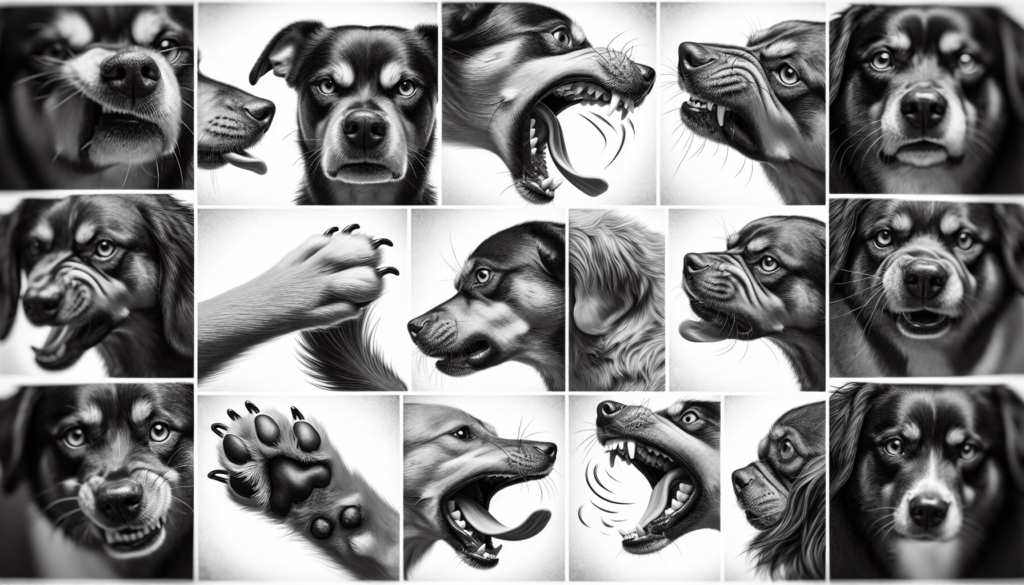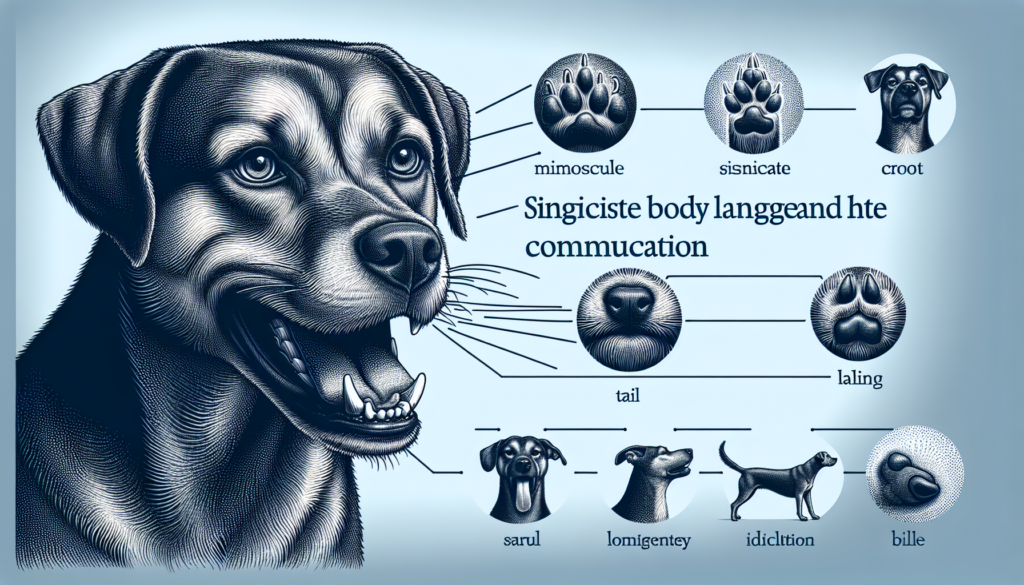In this informative guide, you will discover the fascinating world of canine body language and signals. Understanding what your furry friend is trying to communicate is crucial for building a strong bond and ensuring their well-being. By deciphering the intricacies of their body movements, facial expressions, and vocalizations, you will be better equipped to interpret their needs, emotions, and intentions. So, get ready to embark on an eye-opening journey into the captivating realm of canine communication.

Body Language and Communication
When it comes to communication, humans rely heavily on spoken language, but for dogs, communication goes beyond just verbal sounds. Canine communication is primarily expressed through body language, allowing them to convey their emotions, intentions, and overall state of mind. Understanding and interpreting canine body language is essential for every dog owner and lover.
Understanding Canine Communication
Canine communication is comprised of various signals, including vocalizations, facial expressions, tail language, posture and movement, ear positions, dominance and submission signals, fear and anxiety signs, aggression and warning signs, as well as social signals. Each of these elements plays a crucial role in conveying messages between dogs and can even serve as a form of communication between dogs and humans.
The Importance of Body Language
Body language is the cornerstone of canine communication. Dogs rely on this non-verbal form of communication to express their emotions, intentions, and needs. By understanding and recognizing the subtleties of their body language, you can gain insight into what your furry friend is trying to tell you. This understanding not only helps in daily interactions but also aids in ensuring the well-being and safety of your canine companion.
Different Types of Canine Communication
Canine communication can be categorized into various types, including vocalizations, facial expressions, tail language, posture and movement, ear positions, dominance and submission signals, fear and anxiety signs, aggression and warning signs, as well as social signals. By examining each type, we can gain a deeper understanding of how dogs communicate with each other and with us.
Vocalizations
Dogs have a wide range of vocalizations that they use to communicate. Barking is one of the most common forms of vocalization and can have various meanings depending on the context. It can be a warning, expressing excitement, signaling fear or anxiety, or even a form of playfulness. Howling, on the other hand, is a more instinctual vocalization that dogs use to communicate over long distances, often serving as a means of calling for their pack. Whining is a high-pitched vocalization often associated with seeking attention, expressing discomfort, or indicating submission.
Facial Expressions
A dog’s face can speak volumes in terms of their emotions and intentions. Their eyes are especially expressive. When a dog’s eyes are wide open and alert, it signifies attentiveness and awareness of their surroundings. Contrarily, when their eyes are squinted or partially closed, it indicates relaxation and contentment. A dog’s mouth can also convey messages. A relaxed, slightly open mouth signals a calm and friendly disposition, while bared teeth or a tightly closed mouth are signs of aggression or discomfort.

Tail Language
A dog’s tail is like a flag, waving emotions for all to see. A wagging tail is often associated with happiness and friendliness. However, the angle of the tail is equally important. A relaxed, slightly wagging tail held in a neutral position suggests a happy and calm state. On the other hand, a tucked tail, pressed tightly against the body, indicates fear or submission. A straight up or stiff tail, held high and rigid, is often a sign of alertness or dominance.
Posture and Movement
A dog’s posture and movement play a significant role in their communication as well. A forward lean is a sign of focus and attentive anticipation. It demonstrates that the dog is ready for action. Cowering, on the other hand, is a submissive posture where a dog lowers their body, tucks tail, and may even roll onto their back, exposing their vulnerable belly. A play bow is a classic invitation to play, where a dog lowers their front end while keeping their hindquarters elevated. A stiff or tense body signals discomfort, fear, or potential aggression.
Ear Positions
The position of a dog’s ears can provide valuable information about their current emotional state. When a dog’s ears are forward and alert, it signifies attentiveness and engagement in their surroundings. Relaxed ears, positioned neutrally, indicate a calm and content demeanor. Conversely, pinned back ears suggest fear, anxiety, or submission. Paying close attention to your dog’s ear positions can help you gauge their comfort levels in different situations.
Dominance and Submission Signals
Dogs use various signals to establish dominance or submit to others. Mounting is a common behavior where one dog asserts their dominance over another. Lip licking is a sign of submission or discomfort, often displayed when a dog feels threatened or anxious. Rolling over on their back exposes a dog’s vulnerable belly, indicating submission and trust in the other dog. Understanding these signals allows for smooth social interactions and helps prevent potential conflicts.
Fear and Anxiety
Dogs, like humans, can experience fear and anxiety. Yawning is not always a sign of fatigue but can be a stress signal when used out of context. Panting is a common behavior that helps regulate a dog’s body temperature, but it can also be a sign of anxiety or distress. Pacing is another behavior often associated with anxiety, restlessness, or the need for attention. Recognizing these signs of fear and anxiety allows you to address the underlying causes and provide the support your dog needs.
Aggression and Warning Signs
Although dogs are known for their loyalty and friendliness, they also have the capacity for aggression. Growling is a clear warning sign that a dog is feeling threatened or uncomfortable. Showing teeth is another aggressive display meant to intimidate and warn potential threats. Snarling, characterized by bared teeth, wrinkled muzzle, and growling vocalizations, is a step further in aggression and indicates a potential attack. Snapping, where a dog thrusts their mouth forward without making contact, is also a warning sign to back off.
Social Signals
Dogs are social creatures that communicate with each other and with us through a variety of signals. Tail play is a friendly behavior often seen during social interactions or playtime, where dogs wag their tails in a loose and relaxed manner. A bow is an invitation to play, characterized by a dog lowering their front end while keeping their hindquarters elevated. Sniffing is a common social behavior that dogs use to gather information about individuals, their surroundings, and even their emotions.
Understanding and interpreting canine body language is an invaluable skill for any dog owner. By familiarizing yourself with their vocalizations, facial expressions, tail language, posture and movement, ear positions, dominance and submission signals, fear and anxiety signs, aggression and warning signs, as well as social signals, you can establish a deeper connection with your furry friend and ensure their well-being. So, pay attention to the subtle messages your dog is conveying and respond accordingly – your furry friend will appreciate it!

